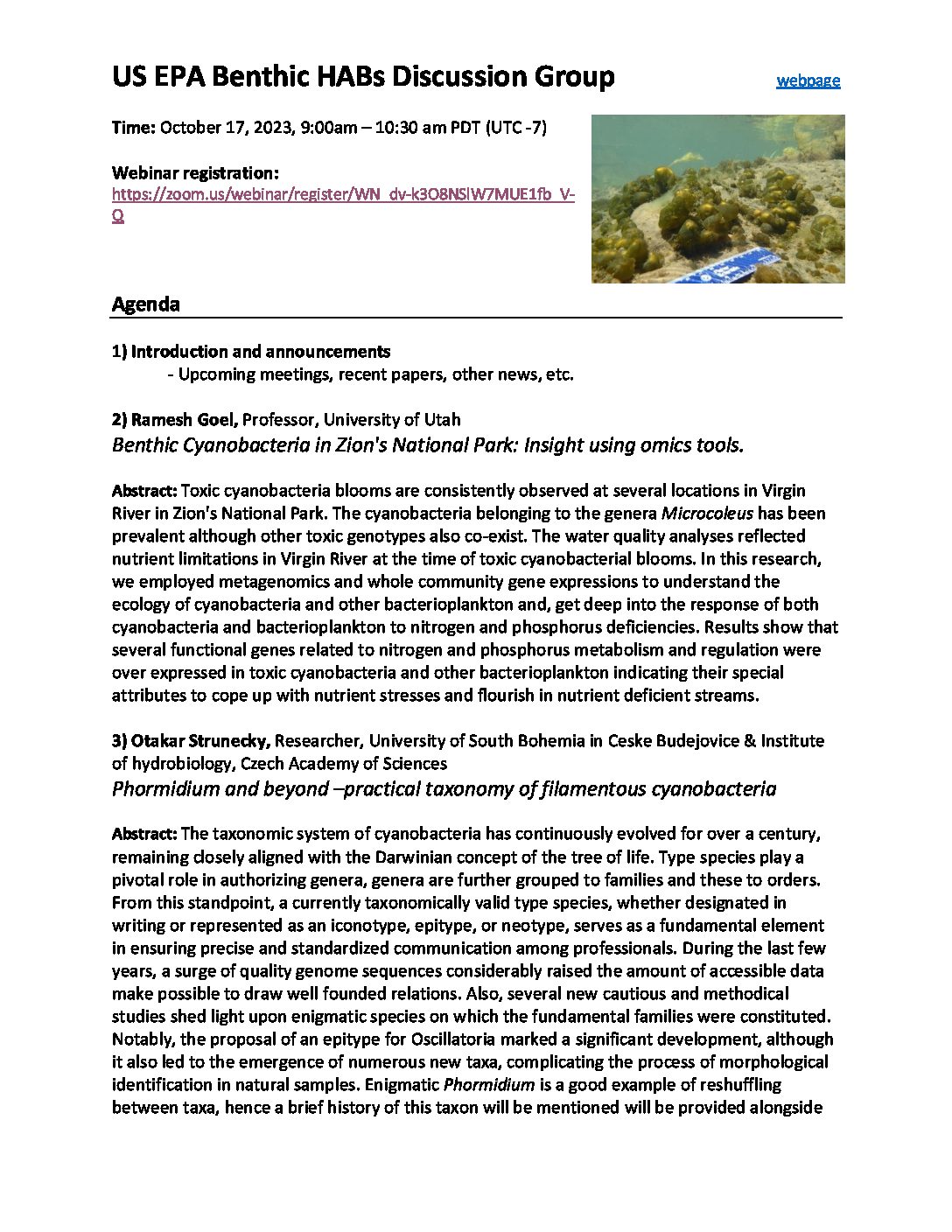
Benthic HABs Workgroup Agenda – October 17, 2023
US EPA Benthic HABs Discussion Group webpage
Time: October 17, 2023, 9:00am – 10:30 am PDT (UTC -7)
Agenda
1) Introduction and announcements
– Upcoming meetings, recent papers, other news, etc.
2) Ramesh Goel, Professor, University of Utah
Benthic Cyanobacteria in Zion’s National Park: Insight using omics tools.
Abstract: Toxic cyanobacteria blooms are consistently observed at several locations in Virgin River in Zion’s National Park. The cyanobacteria belonging to the genera Microcoleus has been prevalent although other toxic genotypes also co-exist. The water quality analyses reflected nutrient limitations in Virgin River at the time of toxic cyanobacterial blooms. In this research, we employed metagenomics and whole community gene expressions to understand the ecology of cyanobacteria and other bacterioplankton and, get deep into the response of both cyanobacteria and bacterioplankton to nitrogen and phosphorus deficiencies. Results show that several functional genes related to nitrogen and phosphorus metabolism and regulation were over expressed in toxic cyanobacteria and other bacterioplankton indicating their special attributes to cope up with nutrient stresses and flourish in nutrient deficient streams.
3) Otakar Strunecky, Researcher, University of South Bohemia in Ceske Budejovice & Institute of hydrobiology, Czech Academy of Sciences
Phormidium and beyond –practical taxonomy of filamentous cyanobacteria
Abstract: The taxonomic system of cyanobacteria has continuously evolved for over a century, remaining closely aligned with the Darwinian concept of the tree of life. Type species play a pivotal role in authorizing genera, genera are further grouped to families and these to orders. From this standpoint, a currently taxonomically valid type species, whether designated in writing or represented as an iconotype, epitype, or neotype, serves as a fundamental element in ensuring precise and standardized communication among professionals. During the last few years, a surge of quality genome sequences considerably raised the amount of accessible data make possible to draw well founded relations. Also, several new cautious and methodical studies shed light upon enigmatic species on which the fundamental families were constituted. Notably, the proposal of an epitype for Oscillatoria marked a significant development, although it also led to the emergence of numerous new taxa, complicating the process of morphological identification in natural samples. Enigmatic Phormidium is a good example of reshuffling between taxa, hence a brief history of this taxon will be mentioned will be provided alongside US EPA Benthic HABs Discussion Group webpage an exploration of the current status of taxa within freshwater Oscillatoriales, including morphologically similar species found in other orders.
Benthic HAB Workgroup Facilitators